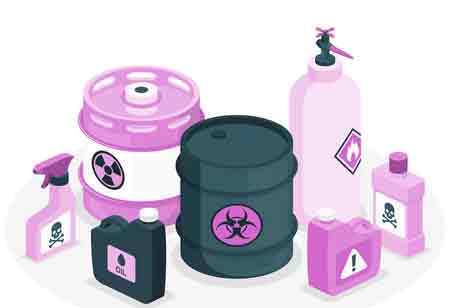Fremont, CA: Safe storage and handling of chemicals are vital for laboratory safety. It's essential to use appropriately labeled containers, separate incompatible materials, and implement secondary containment strategies to avoid accidents. Conducting regular inventory checks and risk assessments is key to sustaining a safe work environment. To adhere to chemical safety regulations and ensure compliance, labs must prioritize the secure storage of chemicals. While a chemical cabinet is one type of engineering control, selecting the appropriate control is only the initial step.
Knowledge of materials
Understanding the onsite materials is essential for handling and storing chemicals properly. One has to ensure that their personnel have an in-depth understanding of individual chemical products as well as engineering controls in order to maximize their effectiveness.
To assist with the identification and minimization of hazards, all onsite chemical safety data sheets must be available to all staff. Training and supervision should also be provided so that all staff understands the Safety Data Sheet information.
Check Usage and Shelf Life
As a follow-up to our earlier point, it would be a good idea to establish a regular inspection checklist. The procedure involves reviewing the chemicals in stock and determining the shelf life of each container.
In order to avoid ineffective, unsafe or unstable chemicals, ensure that rotations are performed so that older chemical stock is moved to the front of the cabinet. This will allow lab staff to use older chemical stock before opening a new bottle.
Controlling Chemical Stocks
It is extremely important to keep the quantities of chemicals present on site to a minimum at all times when working with chemicals. In spite of the fact that this may appear an unusual suggestion for a laboratory, streamlining chemical orders can help to reduce the amount of hazardous materials that will be stored on site.
It is possible for users to reduce the risks associated with hazardous substances by assessing and reviewing chemical ordering procedures.
Accurate labeling
The daily work procedures in a lab often involve transferring or dispensing chemicals. It is also crucial to keep chemical containers labeled with the latest information to reduce risks. It is important to label packages in accordance with regulatory requirements, so that staff is aware of the chemical properties - and the potential hazards - of the products.
Decontamination of old containers
A chemical container can still cause safety concerns, such as corrosion, toxic poisoning and ignition, even when it is empty. Empty chemical containers should be properly decontaminated and disposed of by a chemical waste disposal company, if placed in the waste disposal area.
Hazardous chemical containers must be handled as if they were full, as residuals and vapors can still cause chemical contamination. Decontamination must be conducted on any chemical package or receptacle. The appropriate method for decontaminating empty containers should be determined by the Safety Data Sheet for the particular chemical product.
The process of ensuring the safety of chemicals in the lab requires knowledge, diligence, and a constant reassessment of the environment. Developing an inspection and review system that allows better monitoring and maintenance of chemical storage and handling areas is highly recommended to ensure the safe storage of hazardous substances.

